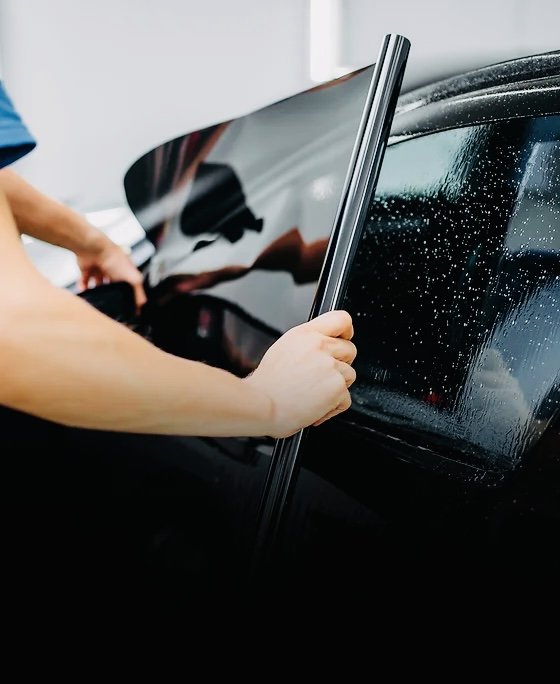Your Comprehensive Overview to Do It Yourself Window Tinting: Idea
Embarking on a Do it yourself window tinting project presents an opportunity to boost both the performance and appearances of your space. Before getting started on this venture, it is critical to navigate the complexities of neighborhood tinting regulations and select an ideal film that aligns with your purposes.
Recognizing Home Window Tinting Rules
Browsing the intricate landscape of home window tinting laws is necessary for any type of DIY fanatic seeking to enhance their car's appearances and comfort. Each state in the U.S. has details guidelines pertaining to the allowed degrees of tint on different windows, which can considerably impact your decision-making process.
Normally, these legislations determine the maximum allowable Visible Light Transmission (VLT) percent, which describes the amount of light that can travel through the tinted home windows. Some states allow just a certain portion of color on the front windshield, while enabling darker tones on back windows. Compliance with these regulations is vital, as failing to adhere can lead to fines or the need to get rid of the color altogether.
Additionally, there are often distinctions in between passenger cars and commercial vehicles, with various regulations relating to each classification. It's suggested to consult your neighborhood Division of Motor Vehicles or comparable authority to collect specific information tailored to your place. Understanding these laws not just makes certain lawful compliance yet additionally boosts security by preserving presence and stopping prospective dangers while driving.

Selecting the Right Tint Film
Selecting the proper color movie is a vital action in the DIY home window tinting procedure, as it directly influences both the look and capability of your car's windows. A number of variables need to lead your selection, consisting of the kind of movie, its lawful compliance, and your wanted results.
First, think about the various types of tint films readily available: colored, metalized, ceramic, and hybrid. Dyed movies provide a fundamental level of privacy and warm decrease but may fade over time. Metalized films offer improved warmth rejection and resilience however can hinder digital signals. Ceramic films, while more costly, provide exceptional warm resistance and UV security without signal interruption.
Following, guarantee that the film sticks to neighborhood laws worrying visible light transmission (VLT) percentages. Compliance with these legislations is crucial to prevent penalties and make certain security.
Crucial Devices for DIY Tinting
Having picked the appropriate color movie for your home windows, the following action involves collecting the required tools to make sure an effective installment. The main devices you will need include an energy knife or a razor blade, which is essential for reducing the tint film to the wanted size. A squeegee is also important, as it helps get rid of air bubbles and smooth out the movie throughout application.
In enhancement to these main tools, a spray bottle loaded with soapy water will certainly help in creating a convenient surface area for the color film, enabling for modifications prior to try this it sticks completely. A gauging tape ensures exact measurements for reducing the movie properly, while a soft cloth or lint-free towel is necessary for cleaning the glass surface area prior to application.
Furthermore, take into consideration making use of a warmth weapon or hairdryer, as this can assist mold and mildew the color film to the shapes of the window and facilitate adherence. Ultimately, handwear covers are a good idea to stay clear of fingerprints on the movie during installation. By gathering these crucial this post devices, you will certainly be well-prepared to tackle your DIY home window tinting task properly.
Step-by-Step Application Process
Begin by completely cleaning up the home window surface area to make sure ideal adhesion of the color film. As soon as the home window is clean, gauge the color movie against the window, permitting for a slight overlap on all sides.
Next, prepare a service of water and a couple of decreases of child shampoo in a spray container. Lightly spray the window surface area and the adhesive side of the movie. This solution will permit for rearranging during application. Meticulously line up the film with the top of the window, guaranteeing it is straight. Press the film versus the glass, beginning with the center and working external to remove air bubbles. Use a squeegee to smooth the film, using company, even pressure.
Allow the color to heal for at least 24 hours without rolling down the home windows. Adhere to these steps faithfully for optimal results in your DIY home window tinting task.
Upkeep and Care Tips
Proper maintenance and treatment of your home window color is vital to ensure its longevity and efficiency. To start with, prevent using rough cleansers or rough materials when cleansing tinted home windows. Instead, choose a gentle, ammonia-free cleaner and a soft microfiber cloth to avoid scrapes and peeling off.
It's recommended to wait a minimum of a week after installation before cleaning your home windows to allow directory the glue to totally heal. During this initial period, prevent rolling down the home windows to avoid any type of damage to the color.
Normal upkeep entails examining the sides of the color for any kind of signs of bubbling or lifting (Window Tinting Folsom). If you discover any type of problems, it's ideal to resolve them promptly to prevent more wear and tear. Additionally, be careful with using home window therapies, such as tones or drapes, as they can create warmth that could endanger the color with time

Final Thought
Finally, carrying out a do it yourself window tinting job requires mindful consideration of regional policies, selection of proper color movies, and the utilization of crucial devices. An organized application procedure guarantees optimum outcomes, while routine maintenance adds to the long life of the color. By sticking to these standards, individuals can attain both aesthetic enhancement and enhanced privacy in their areas, making DIY home window tinting a valuable undertaking.